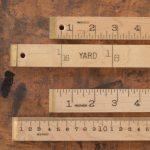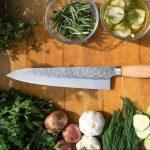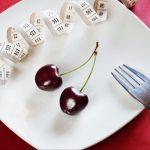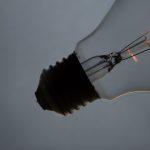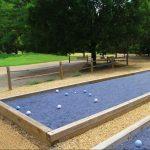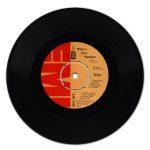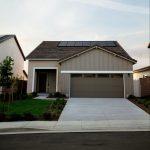Plant Size – Complete Guide From House Plants to Trees
We were taught from a young age that plants are essential to ecology and our ecosystem because they enhance air quality by reducing the atmospheric CO concentration, preventing erosion, and stabilizing climate change. Having plants around the house also has a lot of advantages as they have been found to lower stress and the chance of sickness and boost the aesthetics of the home (skip straight to the plant size chart).

Plants, however, grow in various sizes depending on their species, and deciding which type to plant depends on the amount of space available and your preferences. This article contains a plant size guide to assist you in selecting the appropriate plant for your home, garden, or office.
Related: Lawn Mower Battery size guide (with easy to use size charts), Pool size chart – what are the standard pool sizes by shape
Summary of Plant Size
- Plant Size Chart
- Classification Of Trees Based on their Sizes
- How to Plan a Garden’s Layout
- Other Important Tips to Consider When Designing Your Garden’s Layout
Plant Size Chart
Related: Plant Pot size Guide and dimensions, Christmas Tree size guide – width and height
| Size | Height (ft, cm) | Girth (in, cm) |
| 2X-Small Trees (Whips) | 1-2ft 30-60cm | 0.7-1.5in 2-4cm |
| Extra-Small Trees (Feathered Trees) | 2-3ft 60-90cm | 1.5-2.3in 4-6cm |
| Small Trees (Light Standard) | 3-4ft 90-120cm | 2.3-2.4in 6-8cm |
| Standard Trees | 4-7ft 120cm-200cm | 2.4-3.6in 8-10cm |
| Select-Standard Trees | 7-9ft 200-300cm | 4-4.7in 10-12cm |
| Heavy-Standard Trees | 9ft-10ft 300-320cm | 4.5.5in 12-14cm |
| Extra Heavy Standard Trees | >10ft >320cm | 5.5-6.3in 14-16cm |
There are typically two elements to consider when talking about plant size:
- Plant height is the measurement of the plant from the ground to the topmost portion of the plant at maturity.
- Plant spread is the maximum width of the plant as measured at its widest part from leaf tip to leaf tip at maturity.
Plant sizes comparison into perspective (video)
Classification Of Trees Based on their Sizes
Differences in plant size are often due to differences in genetic variation found among different plant types. Plants, depending on their genes, are uniquely different and grow differently. Environmental factors are also a determinant of plant size and other plant characteristics.
An article from the Wiley Online Library found that there is a relationship between average plant size and physiological traits. Physiological parameters such as chlorophyll concentrations (average chlorophyll contents), photosynthetic capacity, resistance to a change in environmental conditions, metabolic rate, resistance to drought stress, and fruit biomass have a fundamental function in the mature size of the plant.
- Whips
A whip is a juvenile plant that does not yet have any branches or offshoots some whips grow to become standard trees as mature plants while others stay whips throughout their lifespan. They are transplants with only a solitary narrow stalk and no branches.
Typically, the word refers to a woody plant, 2 – 4 years old with a vertical structure. The shape depicts the mature tree’s natural properties. Some plants are well-branched from a young age, while others, including the Norway Maple and the Wild Cherry, are whip-shaped.
- Feathered Trees
The form of a feathered tree usually depicts its natural qualities. A feathered tree has an erect model, with a core-driving sprout and a trunk provided with well-spread and balanced lateral growths down to near ground level, depending on the species.
- Standard Trees
Standard trees are much larger plants with solid linear models, no lateral growths, but branching crowns. The crown may be characterized by either a central head or branched head, as well as a network of branches appropriate for the tree’s species. A standard tree has no primary branches crossing the crown.
Depending on their size, standard trees are classified as light, standard, select standard, heavy standard, and extra heavy standard. The larger the tree, the greater the impact on the landscape.
How to Plan a Garden’s Layout
Related: Greenhouse Size and dimensions (the perfect size for your needs)
When planning a vegetable or flower garden, it is crucial to consider each individual plant’s layout and consider plant size. Selecting the garden’s location, determining the garden’s size, and identifying the types of flowers or vegetables to plant are all part of the planning process. A well-thought-out garden layout is the first step toward a successful home garden.
Choosing a location
Choosing the right location is probably the most critical step when planning a garden layout. The soil type in the garden’s location is critical to its success as it affects nutrient availability, soil water content, and active transport. Choose a loose, rich, level, and well-drained location for your vegetable garden.
Sandy loam, which comprises a mixture of clay, sand, silt, and loam and a neutral PH level, appropriate nutrition, and good drainage, is the most acceptable soil type for a flower garden. Avoid low-lying regions where water collects, or the soil remains damp. Vegetables and flowers will not grow in places that are inadequately drained.
Because plants require adequate sunlight to thrive, avoid planting in areas where buildings, trees, or bushes will shade the garden. Most plants need at least 8 hours of sunlight per day; however, 6 hours is usually plenty for vegetables.
Water is essential during extended dry seasons while planting seeds; therefore, situating your garden near a water source is critical. Avoid planting your garden too close to giant trees or bushes since their deeper roots might deprive flowers, crop plants, and vegetables of nutrients and water and reduce the smaller plant’s photosynthetic capacity.
Determining the Size of the Garden
One of the most typical mistakes passionate, novice gardeners make making the garden too big. A garden that is too big will be too difficult to maintain. Consider the following variables before deciding on the size of your garden:
- Gardening space
For apartment residents, a planting box may suffice. Conversely, there may be ample room for gardening in a suburban or rural setting.
- Time
If you only have a few hours after work or school to care for your garden, a more miniature garden may be best for you.
- The Size of the family
A big garden may be cared for if gardening is a family activity. In addition, a more prominent family can consume more veggies.
- The Purpose of the Garden
A container or flower bed garden may be sufficient if the garden is solely for pleasure purposes. A larger space is required to cultivate veggies for canning or freezing.
- The Type of Vegetables your Intend to Cultivate
Some vegetables occupy a significant amount of space. The garden must be 30 feet wide if you wish to grow ten rows of vegetables. Between rows, there should be at least 3 feet of spacing.
Top 5 Tips for Planning Vegetable Garden for Beginners explained (video)
Choosing what to plant (plant size)
What to plant in the garden is just as important as where to put it. When choosing vegetables or flowers, keep the following questions in mind:
- How much Space is Available?
Watermelons should not be grown in a tiny garden as they take up excessive space. Cucumbers and cantaloupes, for example, can be grown in small gardens by supporting them on a fence or other structure.
- What number of yields are you anticipating?
Turnips, beets, and radishes are small, fast-maturing crops that yield quickly and take up little land. Tomatoes, bush beans, squash, and peppers take up more room, requiring more extended periods. The more productive each row is, the more vital it is in a tiny garden.
- How Much do the Vegetables or Flowers Cost?
Planting vegetables that are pricey to buy at the market is more cost-effective. Broccoli, for example, usually is expensive to buy but is simple to grow at home. Doing this will save money on the purchase of such a veggie.
- Of what Food Value is the Vegetable?
Although all veggies are nutritious, some are more so than others. To add diversity to your diet, grow a variety of veggies.
- Which flowers or Vegetables do You Prefer?
This question is particularly essential if the garden is solely for recreation. Grow vegetables or flowers that your family enjoys.
Determining when to Plant your Flowers or Vegetables
Warm-season and cool-season plants are the two main categories of plants. Plant cool-season plants before the soil warm up in the spring, as they can withstand lower temperatures. They can also be planted in the late summer to be harvested after the fall season’s first frost.
Warm-season plants cannot withstand frost and will not grow in cold soil. Plant them in the spring after the last frost and early enough in the fall to maturity before frost.
Beets, carrots, cabbage, broccoli, onion, radish, turnip, and lettuce are some examples of cool-season vegetables. Corn, beans, Okra, pepper, and cucumber are warm-season vegetables.
Flowers like Agapanthus, Calla Lily, Sweet Pea, Tulips, and Heather only bloom in the spring. Flowers such as Amaranthus, Gloriosa Lily, Cockscomb, Dahlia, and Carnation only bloom in the summer. Sunflower, Star of Bethlehem, Roses, Iris, Juniper, and China Berry bloom in the summer, while Sunflower, Star of Bethlehem, Roses, Iris, Juniper, and China Berry bloom in the autumn.
More related to Plant Size and Growing Plants explained (video)
Other Important Tips to Consider When Designing Your Garden’s Layout
- Ensure that the taller vegetables or flowers don’t shade the lesser ones in your garden, and this can be accomplished by arranging taller plants on one side of the garden and shorter plants on the other.
- To develop a diverse garden layout that will confuse pests and decrease their potential to kill plants, interplant vegetables with flowers or herbs. Growing vegetables with colored leaves, such as purple kale or cabbage, might help confound pests because insects are less likely to be drawn to them.
- Planting brightly colored flowers throughout your garden will attract beneficial insects such as ladybugs, hoverflies, and parasitic wasps that feed on pests. The flower bud nectar attracts these insects and the technique is known as natural enemy species richness, which will help to reduce pest activity.
- Many shallow-rooted plants, such as oregano, tarragon, and thyme, can be grown in pots rather than in a garden if you don’t have enough space for your herbs, veggies, or flowers.
Conclusion
Hopefully, this detailed guide regarding plant size and layout has been helpful to you. Keep in mind that plants are divided into several categories based on their size. Whips, feathery trees, and standard trees are the three types.
We’d love to hear from you, so please leave a remark and share it with others in the space below.
Picture in this post by Aniston Grace on Unsplash
Related Plant Size – Complete Guide
- Barbie Doll Size : What are different sizes of Barbie ?

- Blanket sizes chart : blanket sizes and dimensions in inches & cm

- O’Neill Wetsuit Size Charts

- Tablecloth size chart – What are standard tablecloth sizes ?

- How Many Meters Are In A Yard?

- Poker Chip Size Guide

- Baseball Card Size Guide

- How Many Centimeters are 8 Inches?

- Knife Sizes and Different Types

- 4 Inches is How Many Centimeters?

- Light Bulb Base Sizes : What size light bulb base do I need?

- Bocce Ball Court Size and Dimensions

- Tesalate Towel Size Guide

- Pool Cue Length – Why it is Important?

- Helicopter Sizes and Different Types

- Light bulb Size : What are the different and standard bulb sizes?

- Chessboard Dimensions: What Is The Size Of It?

- Duvet Sizes: What is a Standard-Size Duvet?

- Vinyl Record Size and Dimensions

- Ping-Pong Ball Size Chart

- Single Car Garage Size and Dimensions

- Dolls Size: What Are the Different Sizes of Dolls?






